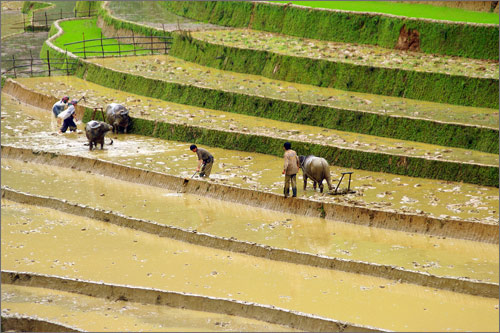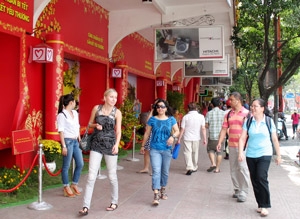
Rains, storms, floods are “specialities” of the central region
The global climate change will bring more rains, storms and floods to coastal resorts in Vietnam, especially the ones in coastal areas in the central region. However, this does not mean all hope is lost, because a group of young scientists from the Scientific Union for Sustainable Tourism Developmetn STDe headed by Dr Nguyen Thu Hanh has an idea of developing tourism products from rains, storms and floods in the central region.
While many people see rains, storms and floods as disadvantageous natural conditions, Hanh and her colleagues see good natural phenomena.
The idea of the young scientists is considering disadvantageous natural phenomena, from rains in Hue City to storms in Da Nang and floods in Hoi An as “tourism resources”.
“If carried out, the tourism products will show a flexible lifestyle that relies on the natural conditions of the central region and heighten tourists’ knowledge about the values of tangible and intangible cultural heritage of tourist cities,” said Dr Nguyen Thu Hanh.
A lot of types of arts can be designed to become special tourism products when they are performed while it is raining in Hue City. Enjoying Hue royal tea, playing or listening to music, admiring the rain, meditating, enjoying Hue meals and making souvenirs in rainy days all could be special tourism products. Besides these indoor tourism products, outdoor events such as water puppetry, racing and wading in the floods, sailing and fishing, can also attract many young tourists who love discovering.
As for Hoi An, tourists will have the chance to admire the general panorama of the ancient town’s roofs when flood waters rise, travel on boats to every corner of the town to take pictures and discover the life of local residents during floods, or go to cafes which are located on second floors of houses in order to enjoy different types of arts from the rain.
Meanwhile, the young scientists have suggested building a “storm park” in Da Nang City. Adventure traveling and disaster tourism will be the two special types of tourism for Da Nang City when the storm city is built and put into operation.
The project on turning disaster into good fortune
In fact, this is not a crazy plan as many people think, and this is not a new idea at all. The concept of “disaster tourism”, i.e traveling to disastrous areas, has become popular in many countries in the world. With the tours, travelers can experience new sensations: they can see with their own eyes the consequences brought about by natural calamities, join the aid efforts and help local residents overcome difficulties. A lot of people spend big sums of money just to be able to travel to areas stricken with natural disasters. A lot of hotels were built in the region of volcanic activities in Hawaii in the US to serve a big number of tourists who want to see volcano eruptions. A lot of travelers flocked to New Orleans after the Katrina typhoon broke out in 2005.
Hanh has affirmed that once these tourism products are developed well, Vietnam will be able to receive high numbers of tourists under the modes of adventure traveling and responsible traveling – the current main trends in the world.
“In fact, in Hue, Da Nang and Hoi An, the number of tourists in the raining and stormy seasons is the highest in a year. Therefore, if we can develop reasonable tourism products, we will be able to attract many tourists,” Hanh affirmed.
Dinh Thi Thu Thuy, Head of the Hoi An Trade and Tourism Division, said that this is a very original and feasible idea. However, she said that it is necessary to conduct thorough surveys on the climate and weather in order to design reasonable products.
Hoi An, for example, can develop tourism products from floods, not from storms, because this may hinder the aid works.
Truong Van Bay, Deputy Chair of Hoi An City’s People’s Committee also called this the project on turning disasters into good fortune.
Bao Linh 



































































